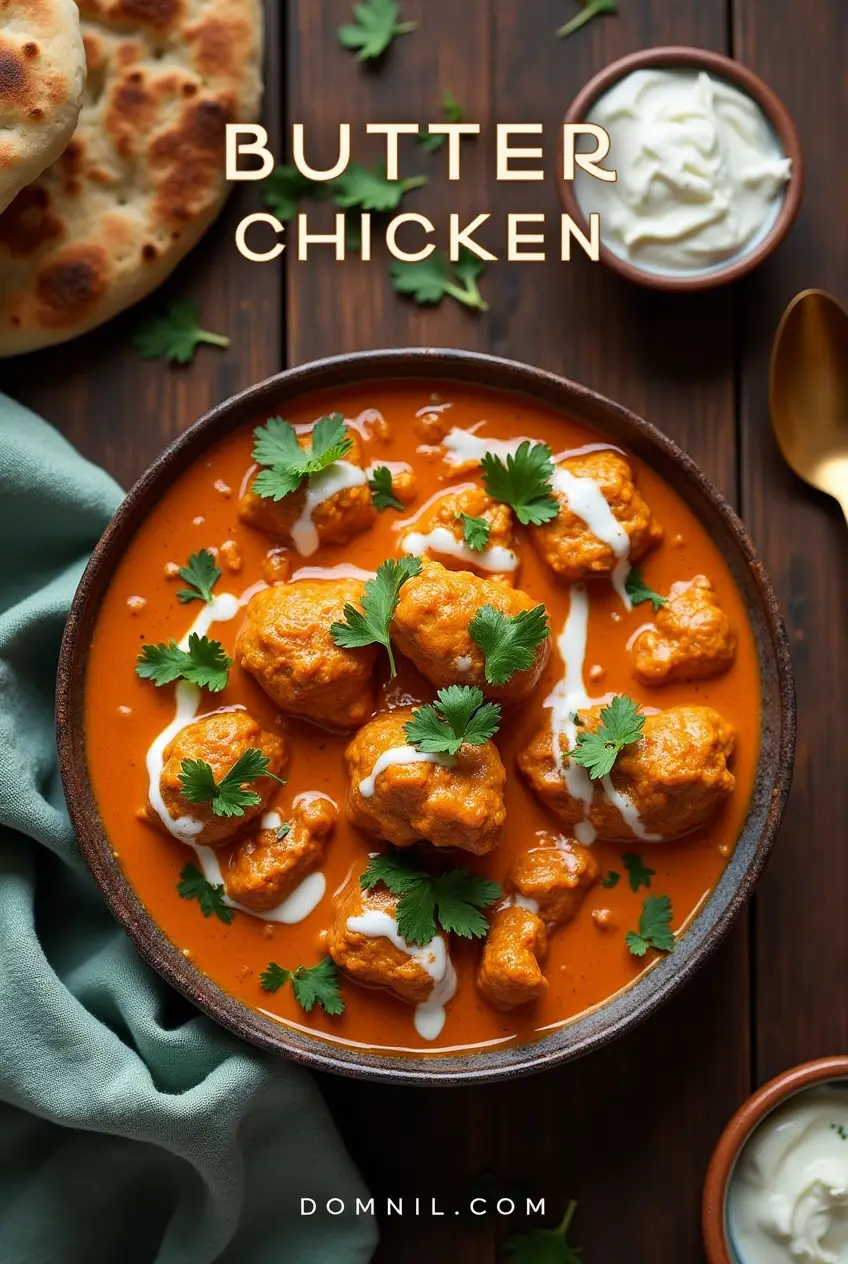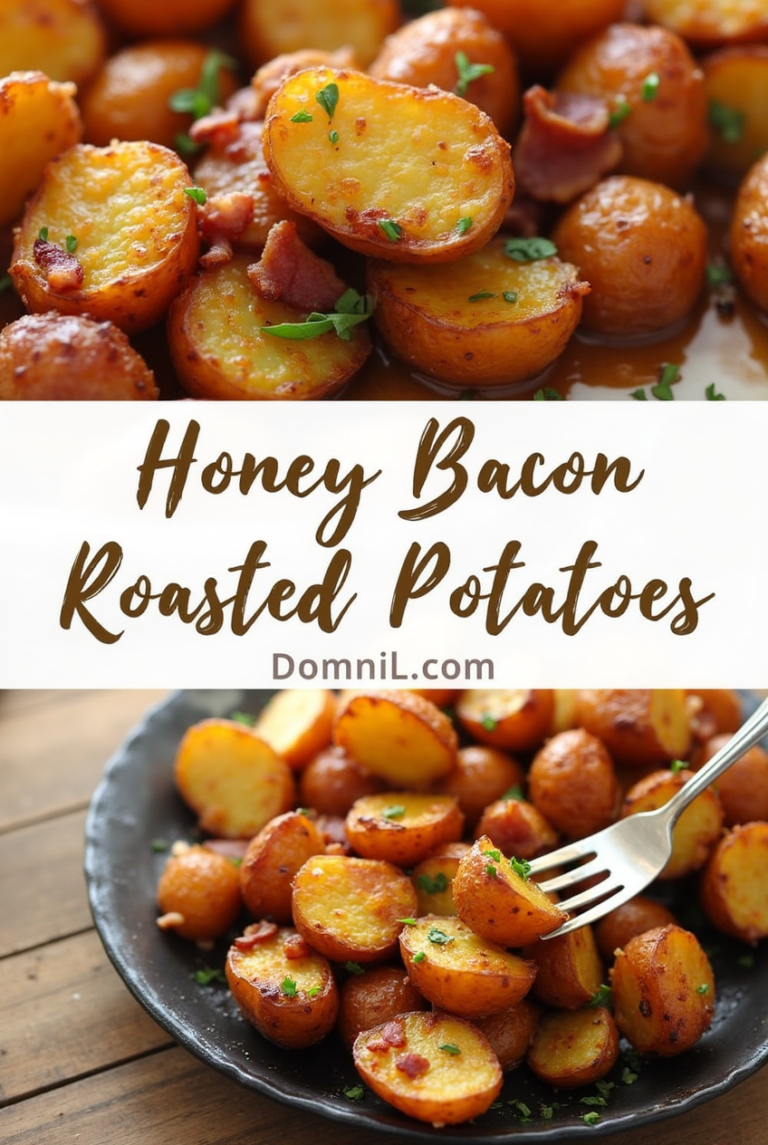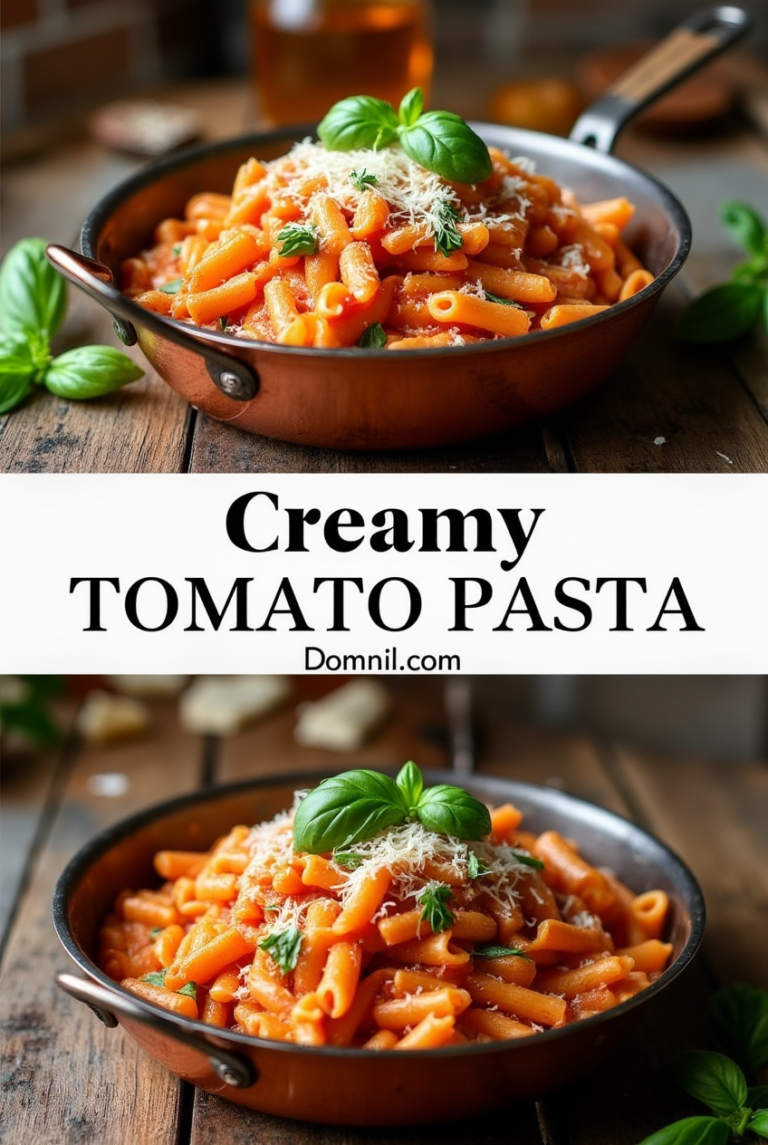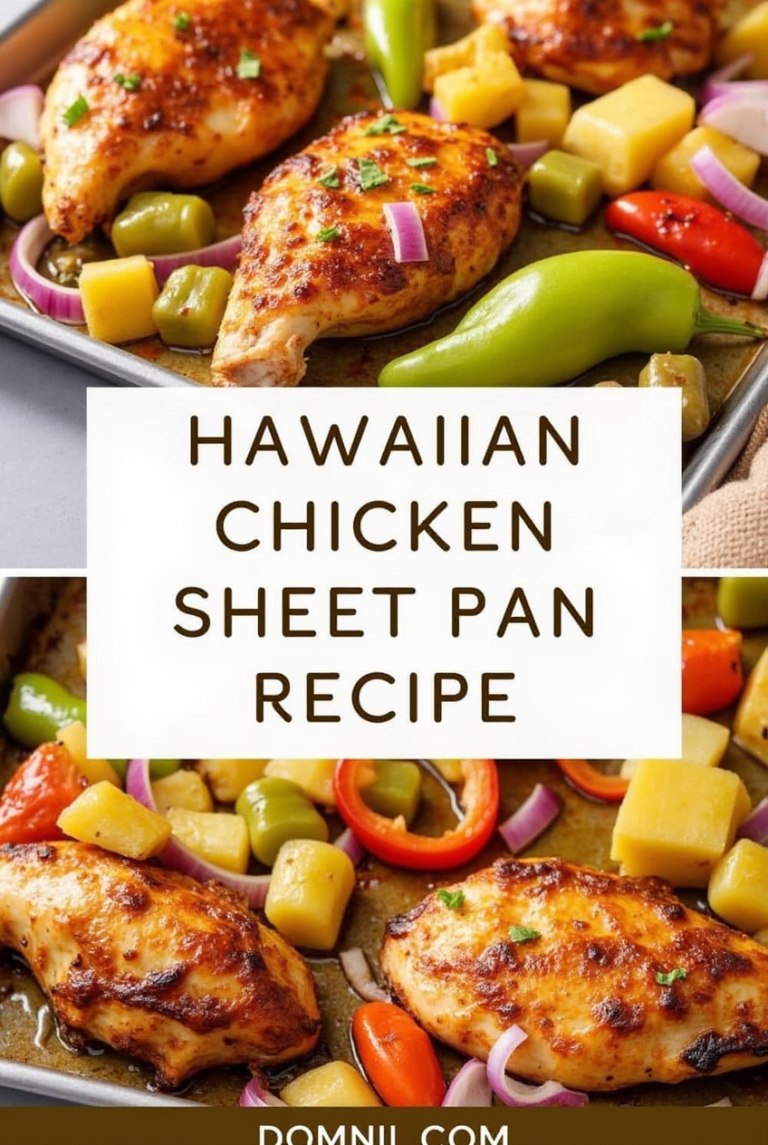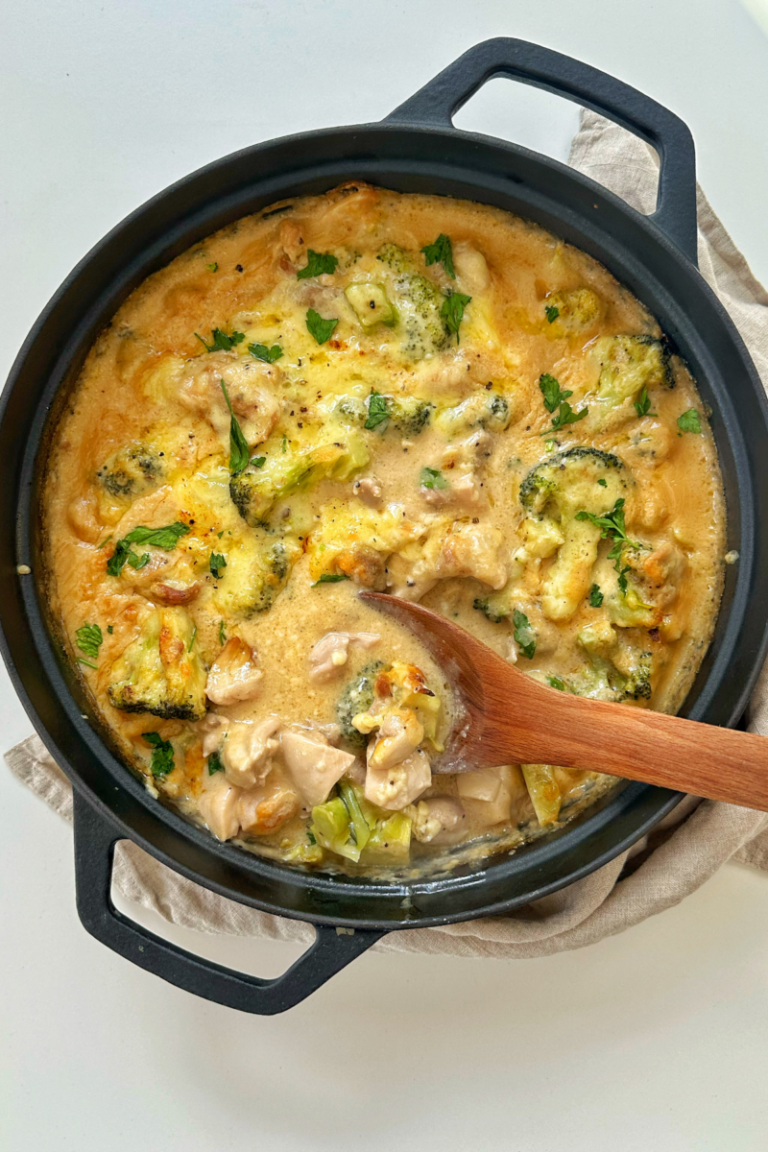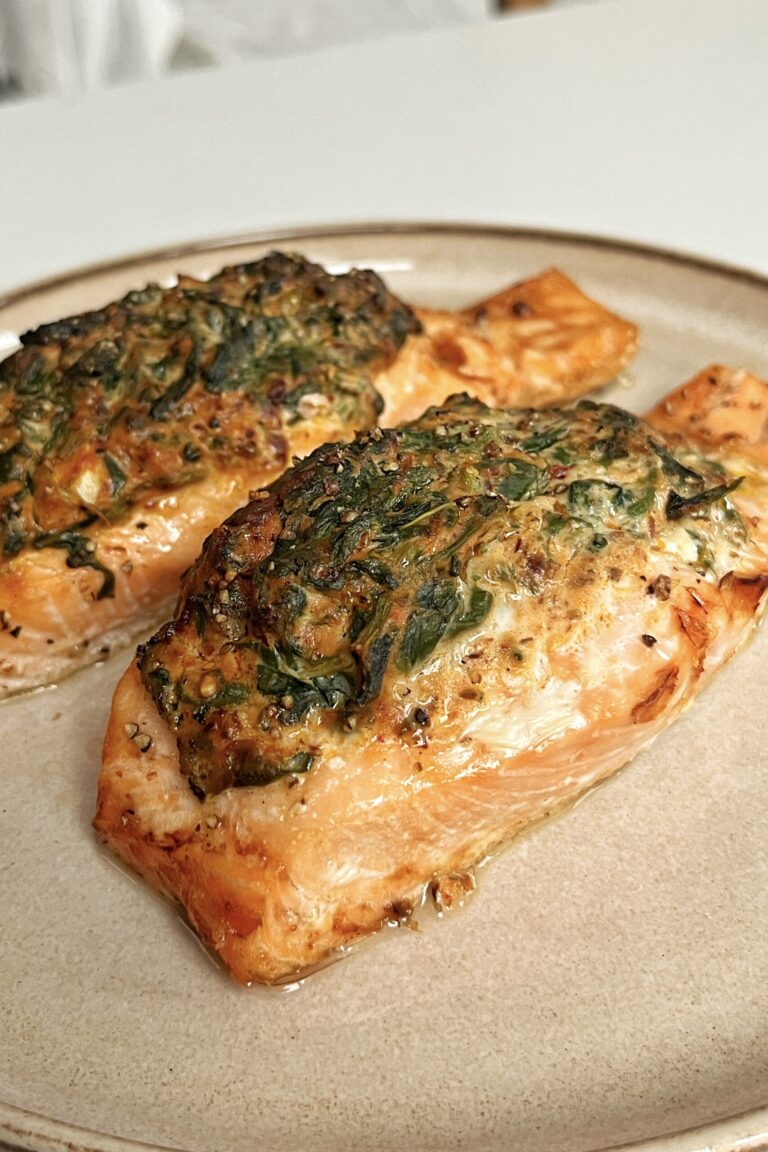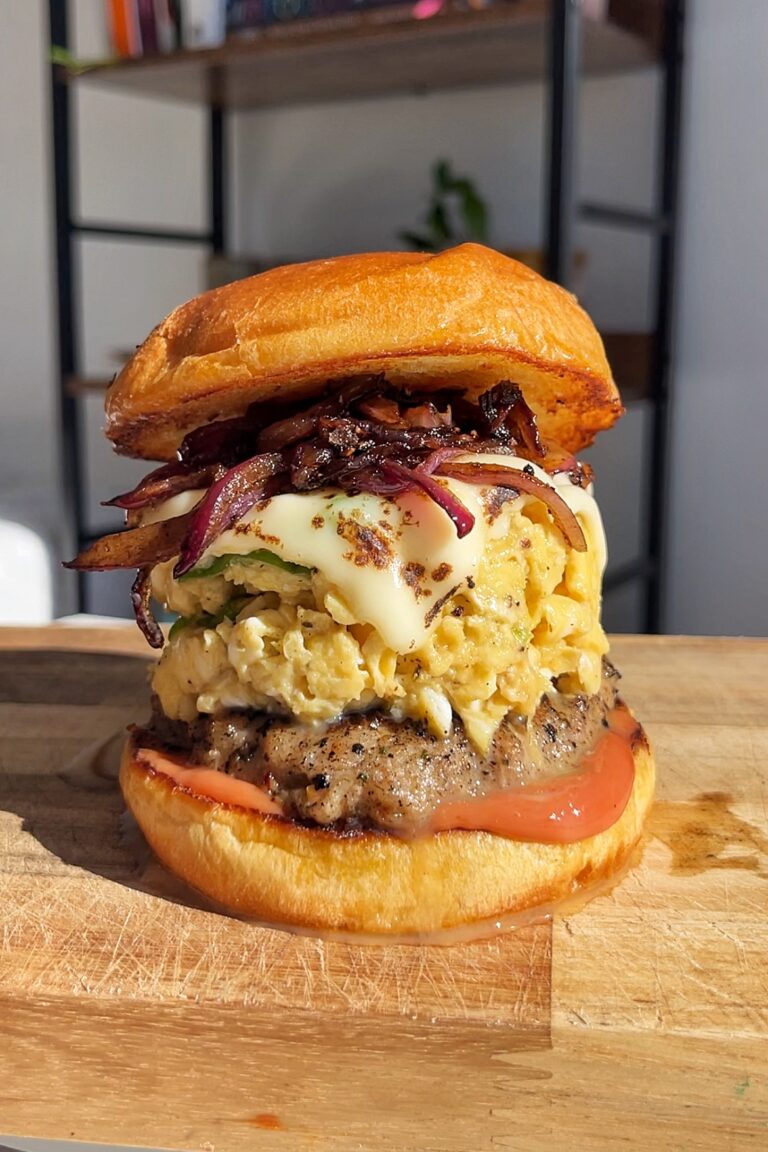Butter Chicken – A Rich, Creamy Indian Delight
Butter chicken—just the name is enough to make your mouth water, isn’t it? This North Indian dish, also known as Murgh Makhani, is one of the most popular Indian recipes globally. Rich, creamy, and bursting with flavor, butter chicken is comfort food at its finest. It’s the kind of dish that brings people together, whether at a festive dinner or a quiet family night. With its roots in Punjabi cuisine and a fanbase that spans continents, butter chicken has earned a revered spot in Indian culinary heritage.
Imagine this: tender, grilled chicken pieces bathed in a velvety tomato and cream gravy, seasoned with a melody of warm spices. It’s not just a dish—it’s an experience. The harmony of smoky grilled chicken and the tangy-sweet richness of the sauce makes it irresistible. It’s the sort of recipe that turns a casual meal into a celebration.
You might think butter chicken is complicated, but it’s surprisingly approachable if you break it down step by step. And trust me, once you get the hang of it, there’s no going back to takeout versions. Whether you’re cooking for yourself, your family, or guests, this dish never fails to impress.
In this ultimate guide, we’ll uncover everything from its history and authentic ingredients to foolproof cooking techniques and perfect pairings. Ready to make the best butter chicken of your life? Let’s get into it.
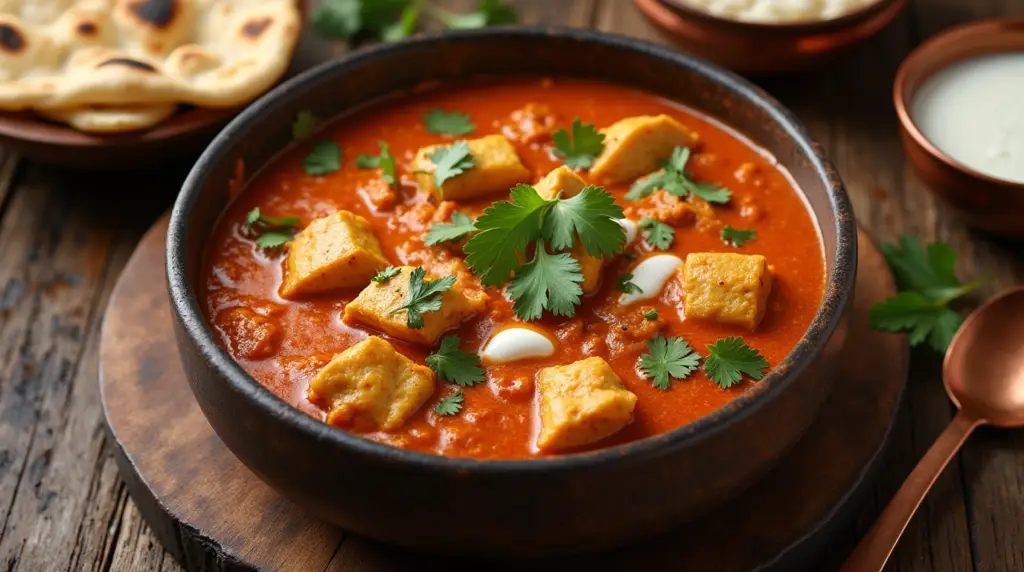
Introduction to Butter Chicken
The Origins of Butter Chicken
Butter chicken isn’t just delicious—it’s got a rich backstory too. This iconic dish was born in Delhi in the 1950s at a now-famous restaurant called Moti Mahal. Legend has it that leftover tandoori chicken was simmered in a buttery tomato sauce as a creative solution to prevent food waste. What started as an improvised experiment soon became a signature dish. The creation by Kundan Lal Gujral not only delighted patrons but became a national treasure in India’s culinary map.
From the bustling streets of Delhi, butter chicken quickly spread across India and eventually the globe. Thanks to Indian diaspora and its appeal to both spice lovers and those with milder palates, butter chicken became a worldwide hit. In restaurants from New York to Melbourne, you’ll find butter chicken on menus, customized slightly to cater to local tastes.
Yet, the heart of the dish remains the same: smoky tandoori-style chicken pieces swathed in a luscious, creamy tomato-based gravy. It’s a beautiful fusion of robust flavors and silky textures that embody the best of Indian comfort food.
What Makes Butter Chicken Unique?
So what exactly sets butter chicken apart from other Indian chicken dishes? One word: balance. It’s the perfect harmony of spices, creaminess, and tang. Unlike spicier cousins like Chicken Vindaloo or more rustic ones like Chicken Curry, butter chicken walks the tightrope between rich and mellow, sweet and savory, creamy and tangy.
At its core, it’s all about that sauce—a luxurious mix of tomatoes, cream, butter, and spices like garam masala, fenugreek, and cumin. But it’s not just the sauce doing the heavy lifting. The marinated, grilled chicken brings a smoky char and tenderness that soaks up all that saucey goodness.
Another key factor is its versatility. Whether served with fluffy naan, jeera rice, or even pasta in fusion dishes, butter chicken adapts effortlessly. Plus, it’s a dish that can be made mild for kids or spicy for heat seekers. That kind of culinary flexibility makes it a household favorite.
In short, butter chicken is not just food—it’s comfort, nostalgia, and gourmet indulgence rolled into one.
Ingredients Breakdown
Essential Ingredients for the Chicken Marinade
The first secret to unforgettable butter chicken? The marinade. You don’t want just any chicken—you want flavorful, tender chicken that practically melts in your mouth. And that starts with a bold, tangy marinade.
Here’s what you’ll need:
-
Chicken thighs or breasts – Thighs are juicier, but breasts work too.
-
Yogurt – Acts as a tenderizer and adds tang.
-
Ginger-garlic paste – A staple in Indian cooking for its pungent kick.
-
Lemon juice – Adds acidity and helps with tenderizing.
-
Turmeric, chili powder, and garam masala – These spices form the backbone of the flavor.
-
Salt and oil – For seasoning and better grill texture.
Let that chicken bathe in the marinade for at least 4 hours, overnight if possible. This time allows the flavors to penetrate deep, making every bite of chicken intensely flavorful.
Pro tip: If you have access to a grill or a tandoor, use it. That charred edge you get from grilling is gold. But even a stovetop pan can do wonders if you cook it right.
Rich and Creamy Sauce Components
The soul of butter chicken lies in its sauce. Silky, rich, and slightly sweet, this gravy hugs every piece of chicken and delivers a mouthful of flavor in every bite.
You’ll need:
-
Butter – Lots of it. It’s not called butter chicken for nothing.
-
Tomatoes (fresh or pureed) – The base of the sauce.
-
Cream – Gives that rich texture and mellow finish.
-
Cashew paste or almond paste – Optional but adds luxurious depth.
-
Spices – Garam masala, chili powder, fenugreek leaves (kasuri methi), cumin, and coriander.
What makes the sauce truly special is the slow cooking. Giving the tomatoes time to reduce and the butter to meld with the spices results in a sauce that’s silky, flavorful, and downright addictive.
Optional Add-ins for a Flavor Boost
While the classic butter chicken recipe is a masterpiece on its own, adding a few extra ingredients can elevate it to an entirely new level. These add-ins don’t replace the original components but enhance the flavor, texture, or richness of the dish in subtle but impactful ways.
Let’s dive into some of the best optional enhancements:
-
Smoked paprika – If you can’t grill the chicken, this spice adds a hint of smokiness that mimics tandoor-cooked flavor.
-
Honey or sugar – Just a touch can balance the acidity of the tomatoes, giving the sauce a mild sweetness that kids and adults love.
-
Green cardamom pods – Throw in a couple while cooking the sauce for a floral hint and depth.
-
Fresh cream swirl before serving – It’s more of a garnish, but it adds extra luxury and visual appeal.
-
Butter-fried garlic slivers – A tiny topping that delivers big on crunch and flavor.
These optional add-ins allow for customization based on personal taste or dietary preferences. Want it creamier? Add more dairy. Prefer it spicier? A green chili or two will do the trick. Cooking should be flexible, and butter chicken is a forgiving dish that adapts well to small tweaks.
Pro tip: Always taste and adjust seasoning at the end. That final sprinkle of salt, sugar, or squeeze of lemon juice could be the game-changer that balances all the elements perfectly.
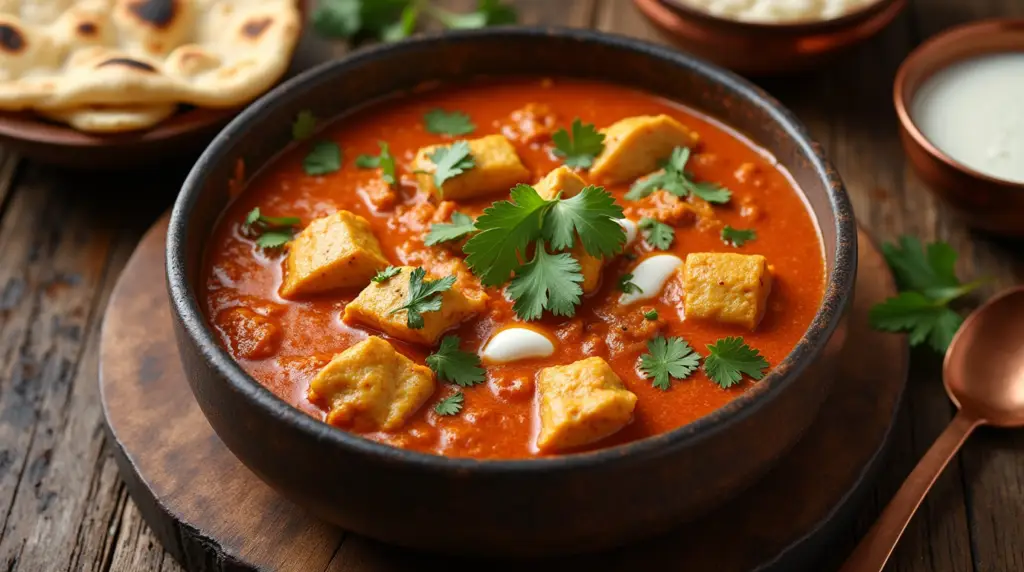
Step-by-Step Cooking Process
Marinating the Chicken
The first real step to crafting a mouthwatering butter chicken is getting the marinade right. Think of this as flavor-building 101. The marinade not only seasons the chicken but also tenderizes it, ensuring that it stays juicy during cooking. Here’s how to get it perfect.
Ingredients for Marinade:
-
500g chicken thighs or breasts (cut into bite-sized pieces)
-
1 cup thick yogurt
-
1 tbsp lemon juice
-
1 tbsp ginger-garlic paste
-
1 tsp turmeric powder
-
1 tsp chili powder
-
1 tsp garam masala
-
Salt to taste
-
1 tbsp oil
Instructions:
-
In a large bowl, mix all the ingredients into a thick, uniform paste.
-
Add the chicken pieces and ensure each piece is coated well.
-
Cover and refrigerate for a minimum of 4 hours, preferably overnight.
The acid from the lemon juice and yogurt breaks down the chicken’s proteins, making it ultra-tender. Meanwhile, the spices infuse every fiber of the meat, ensuring no bland bites.
If you want a shortcut, marinate for at least 2 hours—but know that the longer the marination, the better the flavor.
Cooking the Chicken Perfectly
Once marinated, it’s time to cook the chicken. You’ve got a couple of options here—grilling, baking, or pan-frying. Traditionally, butter chicken uses tandoori chicken, cooked in a clay oven. But you can achieve similar results at home without fancy equipment.
Grill or Oven Method:
-
Preheat your grill or oven to 220°C (428°F).
-
Place marinated chicken on skewers or a baking tray.
-
Cook for 15–20 minutes or until you see a light char.
Stovetop Method:
-
Heat 1 tbsp oil in a heavy skillet over medium-high heat.
-
Add the chicken pieces and cook until golden and cooked through.
Tips for Best Results:
-
Don’t overcrowd the pan; cook in batches if necessary.
-
Aim for that golden-brown exterior—it adds texture and flavor.
-
Rest the cooked chicken for a few minutes before adding to the sauce. This lets the juices redistribute.
Remember, the goal here isn’t just to cook the chicken—it’s to create layers of flavor that will shine through the rich sauce later on.
Creating the Creamy Tomato Gravy
Now comes the heart of the dish: the gravy. Rich, creamy, and full of warm spices, this sauce is what makes butter chicken unforgettable. It’s important to cook the base low and slow to develop depth and smoothness.
Ingredients:
-
2 tbsp butter
-
1 tbsp oil
-
1 onion (finely chopped)
-
2 cups tomato puree
-
1 tsp ginger-garlic paste
-
1/2 tsp chili powder
-
1 tsp garam masala
-
1/2 tsp sugar
-
1/4 cup cream
-
1 tbsp kasuri methi (dried fenugreek)
-
Salt to taste
Instructions:
-
Heat butter and oil in a deep pan.
-
Add onions and sauté until golden brown.
-
Stir in ginger-garlic paste and cook until the raw smell disappears.
-
Pour in the tomato puree and spices.
-
Simmer on low heat for 15–20 minutes, stirring occasionally.
-
Once oil separates from the mixture, stir in cream and crushed kasuri methi.
The result? A rich, smooth sauce that’s mildly spicy, slightly sweet, and deeply satisfying. If it tastes too acidic, add a pinch more sugar. If it’s too thick, loosen it with a splash of water or stock.
Blending and Finishing the Dish
This is the part where everything comes together. You’ve got your grilled chicken, and you’ve got your velvety sauce. Now it’s time to marry the two.
Final Steps:
-
Blend the tomato sauce for an ultra-smooth texture (optional but recommended).
-
Return the sauce to the pan and gently stir in the cooked chicken pieces.
-
Simmer for 10–15 minutes to let the flavors merge.
-
Finish with a swirl of cream, a dollop of butter, and a sprinkle of garam masala.
This final simmer ensures the chicken absorbs the gravy and the sauce thickens to just the right consistency. Garnish with freshly chopped cilantro and serve hot.
Pro tip: For a smoky restaurant-style flavor, hold a piece of hot charcoal with tongs, place it in a small metal bowl, and set that bowl in the middle of your finished butter chicken. Drizzle a little ghee on the charcoal, cover the dish, and let it smoke for 2–3 minutes. Game-changer!
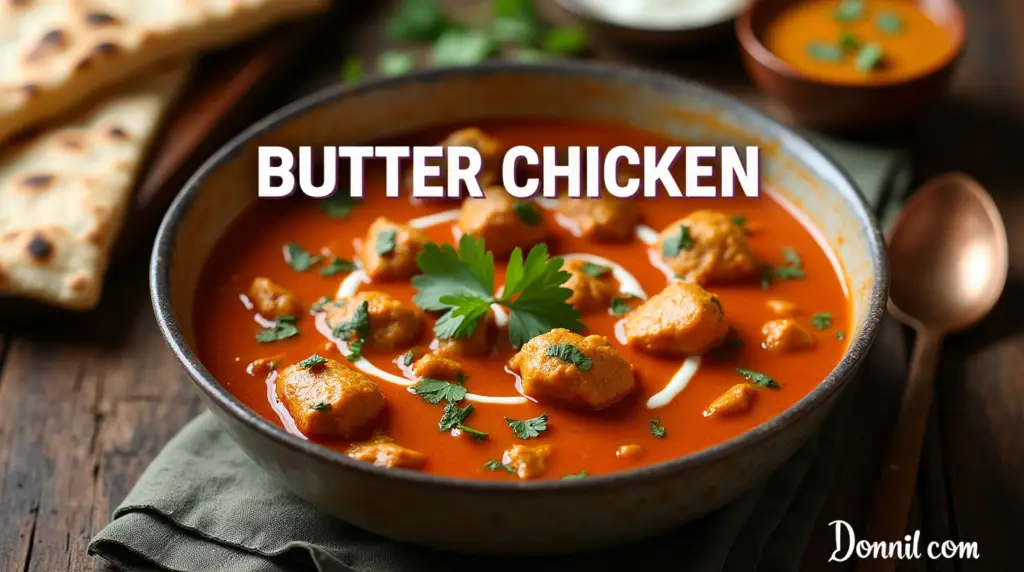
Tips for the Best Butter Chicken Ever
Choosing the Right Cuts of Chicken
Let’s be real—using the wrong cut of chicken can break your butter chicken dreams. The best cuts for this dish are boneless, skinless chicken thighs. Why? They’re juicier, more flavorful, and stay tender even after cooking in a sauce. Unlike chicken breasts, thighs have just enough fat to remain moist and luscious after grilling or pan-frying.
That said, if you’re watching your fat intake or simply prefer white meat, chicken breasts can work too. But you’ll need to be extra careful with cooking time—overcooked breast meat turns rubbery fast. One trick to offset that: marinate longer and cook on medium heat to retain the moisture.
Some folks even go the extra mile and use bone-in chicken pieces for more flavor. This method, while traditional in Indian households, requires more cooking time and effort but rewards you with intense richness.
Here’s a quick breakdown:
| Chicken Cut | Texture | Flavor Depth | Ideal For |
|---|---|---|---|
| Chicken Thighs | Juicy & Tender | High | Classic Style |
| Chicken Breasts | Lean & Firm | Moderate | Healthier Versions |
| Bone-in Chicken | Rich & Moist | Very High | Authentic Home-Style |
The bottom line? Thighs are your best friend for achieving restaurant-quality butter chicken without overcomplicating the cooking process.
Marination Secrets
Ask any seasoned Indian cook, and they’ll tell you—the marinade is magic. The secret to mouthwatering butter chicken lies in how well you marinate the meat. This isn’t a step you can rush. Here’s how to do it right:
-
Use full-fat yogurt. It clings better to the chicken and has a natural richness.
-
Double-layer your spices. Don’t just use garam masala—add chili powder, turmeric, and cumin to build complexity.
-
Add acid. Lemon juice or vinegar not only adds tang but helps break down proteins for that melt-in-your-mouth effect.
-
Include oil. This helps the spices bind and improves grilling texture.
-
Don’t skip the rest. A minimum of four hours is necessary. Overnight? Even better.
You want that marinade to soak into the fibers, not just coat the outside. Some chefs go as far as massaging the marinade into the meat for a few minutes before letting it rest. That little extra love pays off big time when it comes to flavor.
Bonus tip: Add a spoon of besan (gram flour) to the marinade. It helps seal in juices when the chicken hits the pan or grill.
Balancing Creaminess and Spice
One of the most beautiful things about butter chicken is its balance—rich, creamy, and subtly spiced. But get the ratio wrong, and the dish can quickly become too heavy or too bland.
Here’s how to strike the perfect balance:
-
Tomatoes: Use ripe, red tomatoes or good-quality tomato puree for the sauce base. Avoid overly acidic varieties.
-
Cream vs. Butter: Don’t overdo either. Cream adds richness; butter adds silkiness. Together, they create that luscious mouthfeel.
-
Spices: Garam masala is your MVP here, but don’t overshadow the dish with too much heat. Kashmiri chili powder is ideal—it’s vibrant without being overly spicy.
-
Kasuri methi (dried fenugreek): This humble herb is a game-changer. A pinch at the end adds that classic North Indian restaurant flavor.
-
Sugar or honey: Just a touch can neutralize the tang of tomatoes and enhance the overall sweetness of the dish.
Think of butter chicken as a symphony—you need every instrument (ingredient) playing in harmony. Too much cream, and it’s cloying. Too little spice, and it’s flat. Taste as you go. Adjust. That’s how you make butter chicken sing.
Butter Chicken Variations
Dairy-Free or Vegan Butter Chicken
Yes, it’s possible to enjoy butter chicken without the butter—or the chicken. Thanks to clever ingredient swaps, you can now whip up a plant-based version that’s just as indulgent and flavorful.
Here’s how:
-
Replace chicken with tofu, jackfruit, or chickpeas. Tofu works best when it’s pressed and pan-fried for a firm texture. Jackfruit mimics shredded meat. Chickpeas offer a hearty bite.
-
Use coconut cream or cashew cream. These dairy-free alternatives provide richness without compromising the texture.
-
Swap butter for vegan butter or coconut oil.
-
Use plant-based yogurt in the marinade. Almond or soy yogurt with a dash of lemon juice works well.
Surprisingly, the rest of the recipe doesn’t need much tweaking. Spices are naturally vegan, and the tomato base remains the same. You still get the warm, comforting flavors of butter chicken—just in a lighter, cruelty-free form.
Low-Fat Versions
Craving butter chicken but watching your calories? Good news: you don’t have to give it up. You just have to get a little creative.
Here’s how to lighten it up:
-
Use chicken breasts instead of thighs. They’re leaner and have fewer calories.
-
Cut down on butter and cream. Try using low-fat cream or Greek yogurt.
-
Oven-roast instead of pan-frying. It reduces the need for excess oil.
-
Replace nuts with steamed cauliflower puree for a creamy base. You’ll be surprised how well it mimics richness without the fat.
Sure, the taste will be slightly different, but it’s still utterly satisfying—especially when you’re trying to stay on track health-wise. It’s like indulging in your favorite cheat meal…without the guilt.
Spicy Butter Chicken Variants
If you’re someone who likes a fiery kick, butter chicken can absolutely rise to the occasion. Here’s how to dial up the heat without overwhelming the balance:
-
Add chopped green chilies directly into the sauce.
-
Use hot paprika or extra chili powder in both marinade and gravy.
-
Incorporate black pepper or cayenne for a different kind of heat.
-
Infuse the oil with dried red chilies before adding onions to build a smoky base.
The result? A spicier, bolder version of butter chicken that still retains the creamy essence but packs a punch. Just be sure to label it “Hot” if you’re serving guests!
Perfect Pairings and Serving Ideas
Best Breads to Serve With Butter Chicken
When it comes to soaking up that rich, creamy butter chicken sauce, nothing beats Indian bread. While rice is great, bread gives you that immersive, hands-on eating experience—scooping, dipping, and devouring every last bit of the delicious gravy.
Here are the top contenders:
-
Naan: The OG. Soft, fluffy, and slightly charred, naan is the gold standard. Garlic naan adds a punch of flavor, while butter naan enhances the indulgence.
-
Roti or Chapati: A healthier whole wheat alternative. These are thinner, more rustic, and less oily but still pair beautifully.
-
Paratha: Flaky and buttery, parathas add a rich contrast to the smooth sauce.
-
Kulcha: Especially popular in North India, kulchas (stuffed or plain) are thicker and often cooked in tandoors, making them chewy and crisp at the same time.
-
Pita Bread (Western Alternative): If you can’t find Indian bread locally, pita is a decent stand-in, especially when lightly toasted.
Warming tip: Always heat your bread right before serving. A quick roast on the tawa (griddle) or oven restores that fresh, warm texture.
Bonus hack? Brush the bread with ghee or melted butter and a sprinkle of coriander—it turns even store-bought naan into a gourmet treat.
Rice Varieties That Complement the Dish
Butter chicken’s saucy glory pairs beautifully with rice too, especially when you want a more comforting, spoonable meal. The best part is the sauce-to-rice ratio—every grain becomes coated in that delicious gravy.
Top rice options:
-
Basmati Rice: The king of Indian rice. Its long, slender grains and aromatic notes make it a natural partner for rich curries.
-
Jeera Rice: This cumin-spiced version adds a fragrant depth to your plate and breaks the creaminess with a pop of earthy flavor.
-
Ghee Rice: Cooked with clarified butter and whole spices, this rice adds subtle richness and spice notes.
-
Brown Rice: A healthier, high-fiber alternative. Slightly nutty in taste, it adds a wholesome base to balance the indulgence of butter chicken.
-
Pulao: A lightly spiced rice that complements without overpowering. Great for when you want a full-flavored combo.
Cooking tip: Always rinse your rice before cooking to remove excess starch. It ensures fluffiness and prevents stickiness.
No matter which rice you pick, just make sure it’s warm and fluffy—because that sauce deserves nothing less.
Side Dishes to Complete the Meal
Butter chicken is a showstopper on its own, but add the right sides and you’ve got a royal Indian feast. Think of these as the backup singers that elevate the main act.
Top side dishes:
-
Cucumber Raita: A cooling yogurt dip with grated cucumber, salt, and roasted cumin. Perfect for balancing spice and adding freshness.
-
Onion Salad (Laccha Pyaaz): Thinly sliced onions marinated in lemon juice and sprinkled with chaat masala. Zesty and crunchy.
-
Papad (Poppadoms): Crispy lentil crackers that provide texture contrast.
-
Pickles (Achar): Spicy, tangy, and deeply flavorful—just a dab livens up your plate.
-
Mint Chutney: A fresh and vibrant dip made with mint, coriander, and yogurt.
If you’re hosting, you could also serve:
-
Dal Makhani: For a rich and creamy combo.
-
Vegetable Pulao: Adds color and nutrition to your plate.
-
Tandoori Appetizers: Like paneer tikka or seekh kebabs.
These sides aren’t just extras—they’re a way to bring in textures, contrasts, and a fuller culinary experience. The more thoughtfully you pair, the more satisfying the meal.
Nutritional Facts
Caloric Breakdown
Let’s be honest—this isn’t diet food. Butter chicken is indulgent, rich, and calorie-dense. But that doesn’t mean it can’t be enjoyed in moderation or adjusted to fit your goals.
On average (per serving):
-
Calories: 450–550
-
Protein: 30g
-
Fat: 35g
-
Carbohydrates: 12–15g
These numbers depend on portion size, the amount of butter and cream used, and whether you pair it with bread or rice.
High in protein and fats, butter chicken is somewhat keto-friendly if paired with low-carb sides like cauliflower rice or keto naan. For calorie control, reduce the amount of cream and butter, and opt for leaner cuts of meat.
Macronutrient Profile
Here’s a closer look at the macros:
| Nutrient | Value (Per Serving) |
|---|---|
| Protein | 28–35g |
| Fat | 30–40g |
| Carbs | 10–15g |
| Fiber | 1–2g |
This balance makes it satisfying and filling, ideal for lunch or dinner. The protein content keeps you full, while the fat gives that luxurious mouthfeel.
Looking to bulk up? Pair it with basmati rice or paratha. Trying to trim down? Swap in cauliflower rice and reduce cream.
Healthier Swaps
You don’t have to ditch your favorite dish to eat clean. Just tweak it a bit:
-
Use Greek yogurt instead of cream.
-
Swap butter for olive oil or light butter.
-
Add blended cashews instead of heavy cream for a nutty richness.
-
Load up on veggies on the side.
You can also increase the protein quotient by doubling the chicken and cutting down on rice or bread portions. The goal is to enjoy the flavors you love without feeling weighed down.
Remember, food should bring joy—and butter chicken, in any form, definitely delivers that.
Cultural Importance of Butter Chicken
Butter Chicken in Indian Cuisine
Butter chicken isn’t just another dish—it’s a cultural icon. It holds a sacred place in North Indian cuisine, often reserved for celebrations, family dinners, and Sunday indulgences. Originating from Delhi, it quickly became a culinary favorite, thanks to its rich texture and universal appeal.
In India, food is often seen as an emotional connector, a way to bond with others. Butter chicken does exactly that. Whether you’re eating it at a five-star hotel or a local dhaba (roadside eatery), it carries the same comforting, soul-satisfying energy. It’s a go-to for weddings, festivals, and even housewarming parties. That familiar, velvety tomato gravy and perfectly spiced chicken evoke nostalgia in almost every Indian household.
More than just taste, it’s about legacy. Passed down through generations, adapted by grandmothers and chefs alike, butter chicken has become a family recipe in many homes. While some stick to the traditional version, others experiment and innovate—but the essence always remains.
Popularity Across the Globe
Butter chicken has done what few dishes have—it’s conquered the world. From London curry houses to American food trucks and Australian gastropubs, butter chicken is everywhere. It’s often one of the first Indian dishes people try, and for good reason. Its mild spice, rich sauce, and creamy finish make it a great entry point for anyone new to Indian cuisine.
In the UK, it rivals tikka masala for top billing. In Canada and the U.S., it’s a menu staple in almost every Indian restaurant. And thanks to social media, food blogs, and global food trends, it’s being reinvented constantly—think butter chicken pizza, butter chicken pasta, and even butter chicken poutine.
Its global success is also tied to the rise of the Indian diaspora. Immigrants brought their food, culture, and spices to new lands—and butter chicken was a flavor that everyone could love. It’s not just a dish; it’s a delicious ambassador of Indian heritage and culinary tradition.
Common Mistakes to Avoid
Overcooking the Chicken
This is the cardinal sin of butter chicken. Overcooked chicken becomes dry, chewy, and completely ruins the silky, luxurious feel of the dish. It’s especially easy to overdo if you’re using chicken breasts, which have less fat and moisture.
Avoid it by:
-
Using thighs for juicier texture.
-
Cooking chicken separately from the sauce.
-
Letting it finish in the sauce on a low simmer, rather than boiling it in the gravy.
Always remember: once chicken is cooked through (internal temp of 165°F or 74°C), it’s done. No need to keep it on heat for too long.
Using the Wrong Tomatoes
Tomatoes are the heart of butter chicken sauce. If your tomatoes are too sour, too raw, or not ripe enough, the whole dish becomes overly tangy or bland.
Fix this by:
-
Using ripe, red, plum tomatoes or high-quality canned tomato puree.
-
Cooking them down properly to remove excess moisture and raw flavor.
-
Balancing acidity with a touch of sugar or cream at the end.
A good rule of thumb: if your sauce tastes too acidic, it’s likely your tomatoes need more time on the stove or a balancing agent like sugar, honey, or extra cream.
Neglecting the Marination Time
Skipping or shortening the marination time is like forgetting to season your pasta water—it might still be edible, but it won’t be great.
Marination helps tenderize the chicken and infuse it with flavor. Even 30 minutes is better than nothing, but for best results, go for 4–8 hours. The yogurt, lemon juice, and spices work their magic over time, turning bland chicken into a flavor bomb.
No time? Try massaging the marinade into the chicken thoroughly and let it rest at room temp for at least 30 minutes before cooking.
Storage and Leftovers
Storing Butter Chicken Properly
Butter chicken actually tastes even better the next day. The spices settle in, the sauce thickens, and the flavors intensify. But storing it correctly is crucial to maintaining that taste and texture.
Best practices:
-
Store in an airtight container in the fridge for up to 3–4 days.
-
Separate the rice or bread to avoid sogginess.
-
Label and date your container for easy tracking.
For longer storage, butter chicken freezes beautifully. Let it cool completely, then freeze in portions. It keeps well for up to 2 months.
Reheating Without Losing Flavor
Reheating butter chicken is easy—but you’ve got to do it right to avoid rubbery meat or split sauce.
Tips:
-
Use a microwave-safe bowl with a splash of water or cream to maintain moisture.
-
Cover loosely to trap steam.
-
Stir halfway through for even heating.
-
On the stovetop, reheat on low, adding a bit of water or cream as needed.
Avoid boiling it aggressively—that breaks the sauce and toughens the meat. Gentle heat is your best friend here.
Tools Needed to Prepare Butter Chicken
Here’s a handy table of all the essential kitchen tools and utensils you’ll need to cook delicious, restaurant-style butter chicken at home. These items help streamline the process, enhance flavor, and ensure that each step—from marination to gravy-making—is smooth and effective.
| Tool | Purpose |
|---|---|
| Mixing Bowls | For marinating chicken and mixing sauces. |
| Sharp Knife | To trim and cut chicken into bite-sized pieces. |
| Cutting Board | Used for prepping chicken and vegetables. |
| Measuring Spoons/Cups | Ensures accurate spice and ingredient measurements. |
| Tongs | Ideal for turning chicken during grilling or pan-frying. |
| Non-Stick Frying Pan or Skillet | For cooking the chicken and sautéing onions and spices. |
| Heavy-Bottom Saucepan | To prepare and simmer the butter chicken gravy. |
| Blender or Immersion Blender | For a smooth, creamy sauce texture. |
| Spatula or Wooden Spoon | Helps with stirring sauces and scraping the bottom of the pan. |
| Grater | Useful for grating ginger or garlic if not using paste. |
| Strainer or Sieve (optional) | For straining the tomato sauce to remove seeds or skins for extra smoothness. |
| Airtight Containers | For storing leftovers or marinated chicken overnight. |
Creative Leftover Ideas
Leftover butter chicken? Lucky you! You can turn it into a variety of new meals without much effort.
Here’s how to remix your leftovers:
-
Butter Chicken Wraps: Stuff it into naan or pita with onions and lettuce.
-
Butter Chicken Pasta: Toss with cooked pasta and a bit of pasta water—fusion heaven!
-
Butter Chicken Pizza: Use as a topping with red onions, mozzarella, and cilantro.
-
Butter Chicken Quesadilla: Toast between tortillas with cheese for a crispy treat.
-
Butter Chicken Bowl: Serve over quinoa or couscous with a side of greens.
Trust me, leftover butter chicken is like culinary gold—don’t waste a drop.
Conclusion
Butter chicken is more than just a dish—it’s a celebration of flavor, tradition, and indulgence. From its humble origins in a Delhi restaurant to becoming a global comfort food, it’s captured the hearts (and taste buds) of millions. Rich, creamy, smoky, and deeply satisfying, it’s a dish that invites you to slow down and savor every bite.
Whether you’re a seasoned cook or a kitchen newbie, mastering butter chicken is totally doable—and absolutely worth it. With the right ingredients, a bit of patience, and this guide, you’re now equipped to make restaurant-worthy butter chicken in your own home.
So fire up the stove, roll out the naan, and let the aroma of butter chicken take over. Your taste buds will thank you.
FAQs
Can I freeze butter chicken?
Yes, butter chicken freezes really well. Just cool it completely, portion it out, and freeze for up to 2 months. Reheat gently on the stove with a splash of cream or water.
What’s the difference between butter chicken and chicken tikka masala?
Though similar, butter chicken is creamier and slightly sweeter, while chicken tikka masala is usually spicier and has more tomato-forward notes. Both use marinated grilled chicken, but the sauces differ in ingredients and spice level.
Can I use coconut milk instead of cream?
Absolutely! Coconut milk gives a slightly different flavor but works great as a dairy-free alternative. It adds richness and a mild sweetness that complements the spices.
How spicy is butter chicken?
Traditionally, it’s mild to medium-spicy. The focus is on flavor and creaminess, not heat. You can always adjust the chili levels to suit your preference.
What’s the best yogurt for marinating?
Use full-fat plain yogurt or Greek yogurt. It’s thick, creamy, and clings well to the chicken, making it ideal for marinating and tenderizing.

